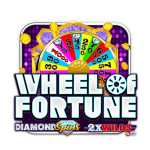An understanding into the world of the roulette wheel is where it starts. Roulette is played on a spinning wheel with numbered pockets, each colored either red or black, with one or two green pockets reserved for the house:
The European roulette wheel has 37 pockets, numbered 1 to 36 plus a single zero (0). The single-zero format gives European roulette a slightly better edge for the player.
The American roulette wheel has 38 pockets, numbered 1 to 36, plus a single zero (0) and a double zero (00). The addition of the double zero increases the house edge, making it harder for players to win.
The different wheel types directly affect your odds, as the house edge in American roulette (5.26%) is higher than in European roulette (2.7%).
The types of roulette bets and their odds are also very important to grasp and offers a range of bets, from high-risk, high-reward wagers on specific numbers to safer, even-money bets on red or black. Here’s a breakdown of each main type:
Inside Bets (High-Risk, High-Reward)
Inside bets are placed on individual numbers or small groups of numbers on the roulette table. These bets have higher payouts but lower odds.
- Straight Up Bet: Betting on a single number (e.g., 17).
- Payout: 35 to 1
- Odds (European): 2.7%
- Odds (American): 2.63%
- Split Bet: Betting on two adjacent numbers (e.g., 10 and 11).
- Payout: 17 to 1
- Odds (European): 5.41%
- Odds (American): 5.26%
- Street Bet: Betting on a row of three numbers (e.g., 1, 2, and 3).
- Payout: 11 to 1
- Odds (European): 8.1%
- Odds (American): 7.89%
- Corner Bet: Betting on a block of four numbers (e.g., 4, 5, 7, and 8).
- Payout: 8 to 1
- Odds (European): 10.8%
- Odds (American): 10.5%
- Line Bet: Betting on two adjacent rows (e.g., 1, 2, 3 and 4, 5, 6).
- Payout: 5 to 1
- Odds (European): 16.2%
- Odds (American): 15.8%
Outside Bets (Lower Risk, Lower Reward)
Outside bets cover larger sections of the wheel and offer lower payouts but better odds of winning.
- Red or Black: Betting on the color of the winning number.
- Payout: 1 to 1
- Odds (European): 48.65%
- Odds (American): 47.37%
- Odd or Even: Betting on whether the winning number will be odd or even.
- Payout: 1 to 1
- Odds (European): 48.65%
- Odds (American): 47.37%
- High or Low: Betting on numbers 1-18 (low) or 19-36 (high).
- Payout: 1 to 1
- Odds (European): 48.65%
- Odds (American): 47.37%
- Dozens: Betting on a group of twelve numbers (e.g., 1-12, 13-24, 25-36).
- Payout: 2 to 1
- Odds (European): 32.4%
- Odds (American): 31.6%
- Columns: Betting on one of the three vertical columns on the table.
- Payout: 2 to 1
- Odds (European): 32.4%
- Odds (American): 31.6%
Additionally the house edge and expected value is the statistical advantage the casino has over players in each game. In roulette the European roulette house edge is 2.7% and the American roulette house edge is 5.26%
This means that, in the long run, players can expect to lose 2.7% or 5.26% of their total bets, respectively. The house edge is critical to understand because it reflects how much of an advantage the casino has in the game, and over time, the house edge ensures that the casino will generally come out ahead.
The term “house edge” refers to the mathematical advantage that a casino or gambling venue has over players in any given game. It’s expressed as a percentage and represents the average amount of each bet that the casino expects to keep as profit over the long run.
The house edge is calculated based on the difference between the true odds of winning a bet and the payout offered by the casino for that bet. Essentially, it’s how the casino ensures profitability over time, regardless of short-term wins or losses by individual players.
Do Popular Roulette Strategies Really Work?
While there’s no way to eliminate the house edge, some players adopt strategies to manage risk or optimize their chances of winning in the short term and they are as follows:
The Martingale system involves doubling your bet after each loss, with the goal of recovering losses with one win. This strategy is typically used on even-money bets like red/black or odd/even.
Risk: If you encounter a long losing streak then bets can become extremely large, potentially exceeding table limits or draining your bankroll.
The Fibonacci strategy is based on the Fibonacci sequence (1, 1, 2, 3, 5, etc.), with each bet amount representing the next number in the sequence after a loss. The player returns to the beginning of the sequence after a win.
Risk: While less aggressive than the Martingale, a losing streak can still lead to large bets and may not always recover losses.
In the D’Alembert strategy, players increase their bet by one unit after each loss and decrease it by one unit after each win. This approach is more gradual, with less risk of massive bet sizes.
Risk: This system is generally considered safer but may not be effective during long losing streaks.
There is a Difference Between American vs. European Roulette: Which Should You Play?
If given the choice, European roulette is statistically the better option because of the single zero. The difference in house edge between American (5.26%) and European (2.7%) can significantly impact your bankroll over time.
Avoiding American roulette when possible is a simple way to improve your odds since the single-zero format increases your expected value per bet.
To maximize your roulette experience, here are a few more tips to enhance your roulette experience:
Set a Budget and Stick to It – Roulette is a game of chance, and the house edge means that players are likely to lose over time. Set a budget and avoid chasing losses.
Play Outside Bets for Longer Playtime – Outside bets give you a higher chance of winning smaller amounts. This can be ideal for players looking to stretch their playtime or minimize losses.
Avoid Betting Systems with High-Risk Multipliers – Systems that involve exponentially increasing bets (like the Martingale) can deplete your bankroll quickly, especially in games with a strong house edge.
Conclusion
Roulette is a thrilling casino game, and while it’s impossible to beat the house edge, understanding the odds can help you make smarter choices at the table. European roulette offers better odds than American roulette, and the variety of bet types allows you to customize your risk level. Betting strategies can be fun to try but should always be used with caution.
Ultimately, roulette is best enjoyed for entertainment – a game of luck where each spin brings the promise of a potential win. Enjoy the ride, manage your budget wisely, and remember that, in roulette, the journey is just as exciting as the outcome!












